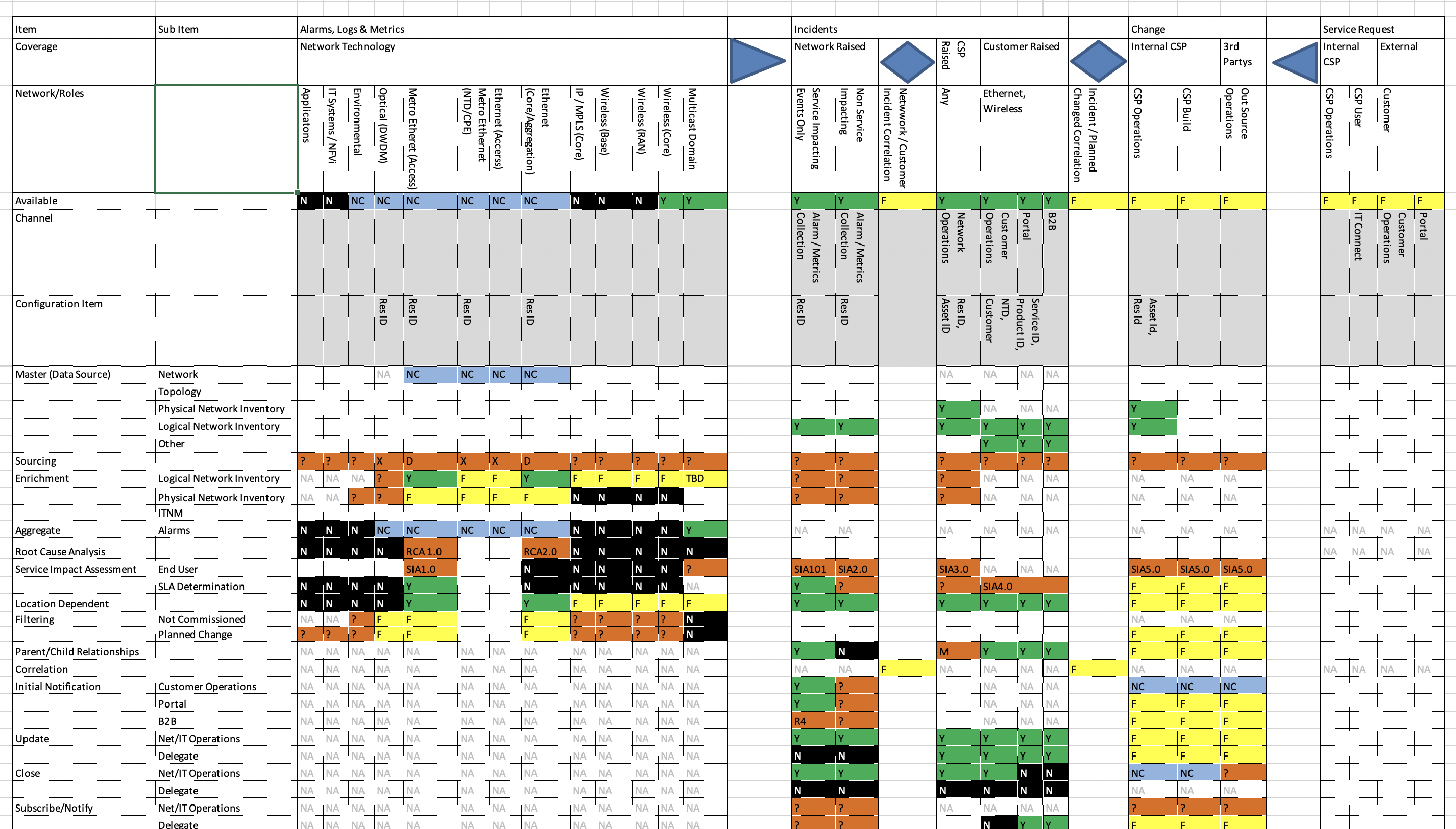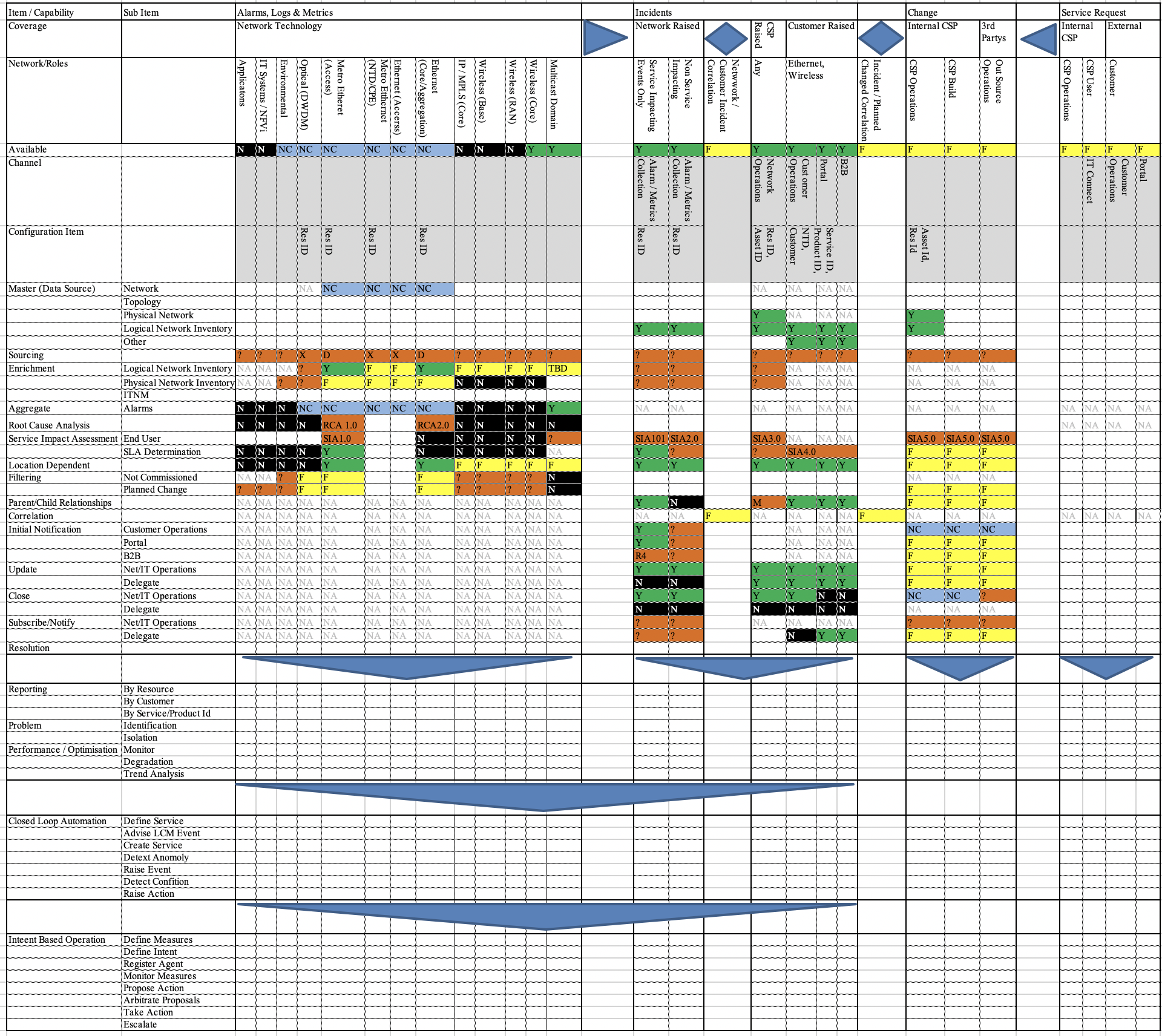An Assurance Coverage Model
A simple Assurance coverage model to help communicate coverage and identify future scope/ambition for coverage.

In telco there is an old adage that you create a service once and you assure it forever. Over the last five years Assurance has moved from "ITIL" focused to "Closed Loop Automation" to "Intent Based Network Operations".
To gauge the maturity of current and proposed Assurance capabilities, I use a coverage model, which generates a "heat map" of capabilities and on a per technology basis.

Coverage Model
The coverage model includes coverage of key ITIL processes:
- Alarm / Metric Collection - collecting data from systems that is basis for monitoring
- Incident Management - handing of incidents where focus is on faster restoration of service/s, which could be triggered from system or consumer/customer of service
- Change Management - where focus is on managing planned change in system and
- Service Request - which is focused on taking requests and manageing these

The model detail includes activities required to provide:
- Data Augmentation - to enrich the information that is availabe
- Aggregation - to aggregate multiple events resulting from alarms storm and providing summary view of this
- Root Cause Analysis - to determine underlying cause of failure / discrepancy
- Service Impact Analysis - to understand impact of failure / discrepancy
- Parent / Child Relationships - to show the relationships across alarms / incidents and discrepancies
- Notifications - to inform required parties / systems of events / incidents
- Reporting - provides aggregated reports of activitiy within monitored systems
- Problems Management - takes broader set of data to try to provide correlating events / changes that could contribute to problem
- Performance / Optimisation Management - looks at metrics and overall aggregate per formance of the network
- Closed Loop Automation - network ambition and coverage, that could be driven by events / alarms for automated break / fix automation (with notification to change management) or if looking at aggregate performance and optimisation is more likely to be served by.
- Intent Based Operation - which operates based on definition and mesurement of intent and having agents that can proposal actions drive systems to operating with defined intent thresholds.

Use of Model
The purpose of the model is not to "go all green" rather it is get an overall view of capabilities and there maturity within the different domains that might exist at the CSP. The example has domains: Applications, IT Systems / NFVi, Environmental, Optical, Ethernet, IP/MPLS & Wireless.

The purpose is to identify the targets for coverage and what capabilities would be needed to meet these.
This is consistent with current ITIL practice, which is not to for complete ITIL coverage but to target your coverage based on benefit and prioritities.
NOTE: The heat map spreadsheet is available by request.
References and Links:
ITIL - Information Technology Infrastructure Library (ITIL) was an initiative of UK Governments IT Agency to define clear processes and management of IT systems. This was expanded and adopted by Telecommunciations Industry. The "library" is now mantained by Axelos.
Closed Loop Automation - is closely related to Intent Based systems, but lacked formal specification of the intent. Initial objectives were defined in IBM's Autonomic Computing initative (2001). This outlined a sense and respond framwwork with primary goals of: Self Configuration, Self Healing, Self Optimisation and Self Protection.
Intent Based Network Operations - is currently one of TmForums strategic focus items in moving to automous network operations. To operate on intent requires clear way to specify and measure performance relative to objective and have agents that can propose actions when there is a divergence. So currently Intent based operations work best in context of overall network performance and operations
